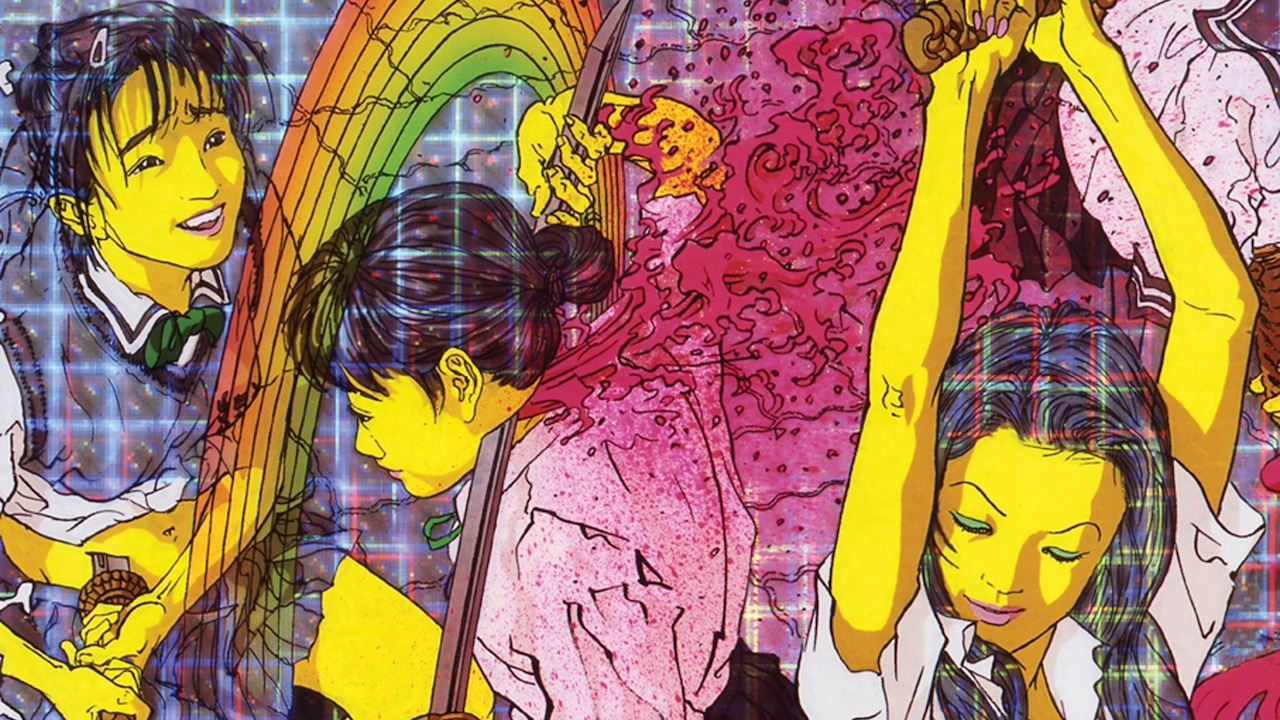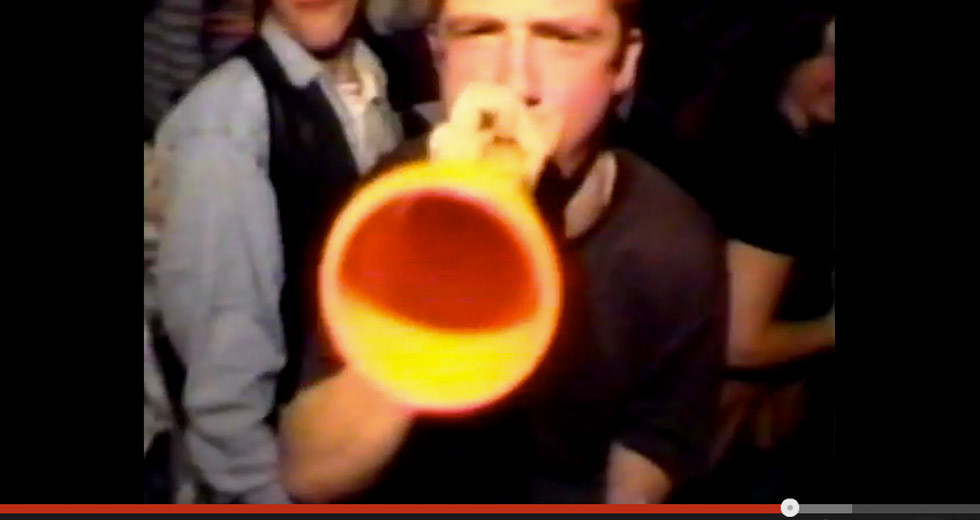Laurel Halo: Flux Music
Angus Finlayson takes a deep dive into the discography of one of electronic music’s most idiosyncratic producers

“I’m pretty sure that my music will remain in flux,” Laurel Halo announced in one of her earliest interviews. It’s a prediction that has proven largely correct. More so than almost any of her contemporaries, the Brooklyn-based producer is in the business of shrugging off categorisations, pursuing a muse that seems destined to lead her away from familiar ground. Since her emergence in 2010, a string of EPs and an LP have earned Halo an enormous amount of adoration, critical and otherwise. But still her music remains challenging, chameleonic and often frustratingly difficult to parse – as if it constantly, subtly evades the means of interpretation available to us.
Ideas perpetually materialise, develop and then fall away steeply.
It might have been hard to detect all of this in Halo’s earliest work. Her 2010 EP King Felix explored a lo-fi synth pop template not dissimilar from Hippos in Tanks labelmates d’Eon and Hype Williams. And while the reference points were unusual – the bright, strident vocals and grandiose arrangements had something of a Todd Rundgren flavour – they weren’t unprecedented in an underground in the process of feverishly reviving every forgotten corner of pop music’s past.

But as Halo’s productions have grown in confidence and ambition it’s become clear that she stands apart from the US bedroom-pop scene with which she was first associated. For one thing, her music is never particularly referential, never really about other cultural matter in the manner of, say, James Ferraro’s impish commentaries on consumerism, or Oneohtrix Point Never’s revival of lost New Age futures. And Halo’s music, often fearsomely technical in construction, has always seemed to evoke sweeping steel-and-glass architectures and the high-speed ferment of contemporary urban living – a world away from the nostalgised sheen of the chillwave set.
The explanation for Halo’s distinctive tastes perhaps lies in her background. Raised in Ann Arbor, Michigan, she made regular pilgrimages to nearby Detroit to soak up techno in its natural habitat. Both of her parents worked in the city’s automobile industry, and Halo has often waxed lyrical about techno’s evocation of the “melancholy of the commute.” It’s an influence that came to the fore in 2011’s Hour Logic EP, where Halo’s vocals took a backseat to glossy synth chords and mechanised rhythms, evoking the strange mixture of futurism and dereliction that defines the landscape of that city.
Also, at a moment when a neo-rustic outlook and the fetishisation of obsolete technology are standard practice, Halo is instead consistently drawn to the wonders of the present. “I think there’s just something very beautiful about hard science,” she has said. “There’s something very mysterious about it [...] It’s almost like it’s something sacred in this way, it’s today’s religion.” This preoccupation has surfaced in her titles – “Supersymmetry,” “Coriolis” – as well artwork: King Felix’s cover is an image of the Z machine, the world’s largest X-Ray which, when activated, briefly achieves temperatures hotter than the sun. It also manifests in a certain geometric sensibility to her music, a fixation with “suspension” and envisioning musical forms as “domes, arcs [and] webs.” This, you could argue, is the best way to describe the way that Halo’s tracks unfold: ideas perpetually materialise, develop and then fall away steeply.
Quarantine is lovesickness recast as pathology – alien and incurable.
The internet is also a preoccupation. But, like her music, Halo’s feelings on it are constantly changing. In the past she has played with the decentred, hyper-unreal jumble of signifiers that the web represents in a manner similar to James Ferraro or Gatekeeper. A memorable passage from a 2010 interview has Halo describing a “scorching dream of childhood... imagining I was on the Mario Kart island, getting out of the car and going swimming in that neverending, cerulean CGI water, the acute feeling of never needing to come up for air, doing 3D flips and rolls in an eternal blue lagoon…”
Nowadays she’s more uncertain, her optimism tinged with negativity. We live, she has more recently claimed, in a time when “people are more disconnected than they’ve ever been.” Quarantine, the debut Laurel Halo album, represents the peak of this ambivalence; the musical manifestation of Halo’s contention that “information is no substitute for love.” Released last year on Hyperdub, the album mirrors Halo’s interest in “contrails, trauma, volatile chemicals, viruses” – in other words, thoroughly modern terrors whose violence is invisible and unpreventable. But Halo’s real concern is to find the parallels between these phenomena and the internal violence of heartbreak. This is lovesickness recast as pathology, alien and incurable – or, as she sings on “MK Ultra,” “Hanging onto obsession / I can never let go.”
As well as being remarkably conceptually unified, Quarantine was also Halo’s most technically accomplished record to date. While songs at their core, the album’s 12 tracks are peppered with stark, unfamiliar sonorities that intrigue and confuse. Halo’s vocals, returning to the foreground for the first time since the King Felix EP, are central to this strangeness. Whereas on that EP the vocals were slathered in a concealer of delay and reverb, here Halo is super-dry, abrasive, at points almost headache-inducing. It’s a sound both highly synthetic and, in the laying bare of every minute imperfection, daringly personal. Halo’s approach has proved divisive, but, in service to the record’s bleak themes, it’s difficult to deny its effectiveness.
It’d be easy to mine the same sound. But in spite of the plaudits heaped on Quarantine, Halo’s music remains resolutely “in flux.” This year’s Behind the Green Door EP once again sets vocals aside to explore a more percussive, propulsive sound previously outlined on a 2012 EP for Liberation Technology under the King Felix alias. But in 2013 Halo is more attuned to dancefloor dynamics than ever, her arrangements newly streamlined, crisper and more incisive – reflecting her experience of performing live, particularly in a club setting. After Quarantine the EP seems to reflect a newly optimistic outlook, as if Halo is finally embracing the dancefloor’s joyous dissolution of the self over pop’s anguished expressions of selfhood. Most artists would struggle to make such a transition without throwing their musical identity into question. But Laurel Halo has done it before – with considerable success – and doubtless she’ll do it again.

